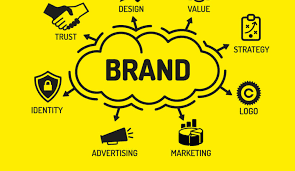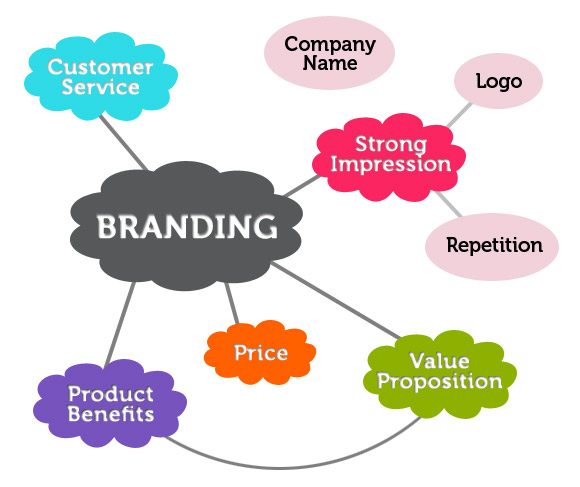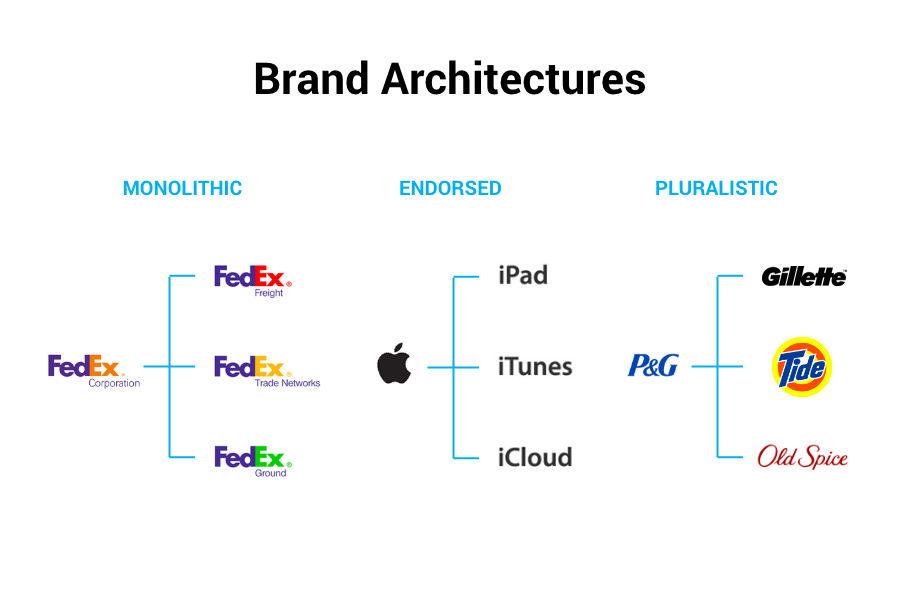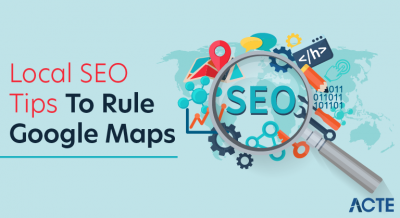
Branding is the process of creating a strong, positive perception of a company, its products or services in the customer’s mind by combining such elements as logo, design, mission statement, and a consistent theme throughout all marketing communications.
- Introduction to Branding
- Why is branding important?
- Benefits of branding
- What Makes a Strong Brand?
- Why branding?
- How branding helps you?
- Understanding Brands
- History of Brands
- Types of brands
- What does this brand do?
- Conclusion
Introduction to Branding:-

If the interpretation of branding was simple, there would not have been so much ambiguity and inconsistency regarding the concept. Yet, for the most part, a strong understanding of branding requires a sound understanding of business, marketing, and even (human) relational basics. Branding is such a vast concept that a correct definition that really covers everything it represents, just by itself will not bring much clarity to the subject. But, to reduce the spread of obsolete, inaccurate and incomplete information about branding, we offer a more complete definition:
Branding is the continuous process of identifying, creating and managing the cumulative assets and functions that shape the perception of the brand in the minds of the stakeholders.
If you compare this definition with the official Cambridge definition, you can clearly see that the latter (Cambridge) provides more surface-level information, giving the reader a false sense of understanding. This may be one reason why most people think the definition is correct and choose it as the basis for their knowledge-building on the subject. In fact, basing your learning about branding on a definition that reduces it to just one element (visual identity) reduces every other concept related to branding when trying to connect the dots.
Our definition of branding, even though one may seem more vague than the other, makes more sense to the concept when diving deeper into its meaning. Here’s a rough breakdown:
1. Continuous Process– Branding is a continuous process as it never stops. People, markets and businesses are constantly changing and brands must evolve to keep pace.
2. Identify, Create, Manage– Branding has a structured process where you must first identify who/what you want to be to your stakeholders, tailor your brand strategy to your situation, and then continuously manage everything that affects your position .
3. Cumulative Assets and Works– Your position should be translated into assets (eg, visual identity, content, products, advertising) and actions (eg, services, customer support, human relations, experiences) that project it into the minds of your stakeholders, gradually creating that notion.
4. Perception of a Brand– Also known as prestige. It is the association that a person (customer or not) has in mind about your brand. This perception is a result of the branding process (or lack thereof).
5. Stakeholders– It is not the customers only who form the perception of your brand in your mind. Stakeholders include potential customers, existing customers, employees, shareholders and business partners. Each one creates their own perception and interacts with the brand accordingly.
Why is branding important?
Branding is absolutely vital to a business as it has an overall impact on your company. Branding can change how people view your brand, it can drive new business, and increase brand value – but it can also do the opposite if done incorrectly or not at all.
“A good definition of brand strategy is the perceived intention to have a positive role that a company wants to play in the lives of those people and the communities around it.” — Neil Parker
Let’s set something straight: Reputation is built whether or not a business does something about it. The result can be a good or bad reputation. Understanding and using branding simply means taking the reins and trying to control what that reputation looks like. This is why it is recommended to consider branding from the very beginning of your business.
Contrary to popular belief, branding is not an “expensive marketing strategy that only big brands use”. Quite the contrary – branding has a lot to do with common sense and is heavily influenced by the market you are in and the level at which you want to play. Branding involves a consistent mix of different competencies and activities, so its cost can vary wildly from case to case. High-level advisors and flawless implementation will, of course, be more expensive than anything below this. Similarly, branding an international, multi-product business will be far more challenging and resource-heavy than a local business, for example. There is no one-size-fits-all approach.
Benefits of branding:-

Branding is important when attempting to generate future business, and a strongly established brand can increase the value of the business by giving the company more leverage in the industry. This being firmly established in the market makes it a more attractive investment opportunity. The result of the branding process is the brand, which embodies the reputation and value that comes with it. A strong reputation means a strong brand which in turn translates into value. That value can mean impact, price premium or mindshare. Brand is a business asset that also carries monetary value in itself and should have its own place on the balance sheet of the business as it enhances the overall value of the company. While this is a controversial topic and a difficult task for many companies, giving financial weight to a brand is as important as branding itself – this is called ‘brand valuation’.
Our ‘Brands in the Boardroom’ series makes an excellent point to the business side of branding. Branding is one of the most important aspects of a successful business. It is the first impression you give to your audience and that is what makes you stand out among your competition. Your brand is a direct reflection of what your customers should expect from you. It’s your voice, your mission, your marketing materials, your packaging, your website. This is the reason why people will choose you over others. Simply put, branding is not just a logo. Especially for small businesses, it is important to attract and retain loyal customers and branding will do just that. If you’re on the fence about branding, here are 11 benefits you can consider:
1. Branding helps you stand out in a saturated market. If you are a small business or creative entrepreneur, you must have realised by now that there are many of us! It’s common for people to find quick solutions and buy a logo for $50, but they may not have a set strategy for their brand. There is no meaning behind their logo and it doesn’t even make sense to their target audience. A good brand has a clear purpose and will help you stand out among others in your field. Maybe what you offer or your style is similar to your competition, but customers and clients will choose you because of your brand, your entire package, and vibe. First impression is everything.
2. Branding gives you credibility. Having an established and clear brand will make you look like an expert. People are more likely to buy from you if you know what you’re talking about and come across as a professional.
3. With a clear brand, you can charge what you’re worth. Getting your first customers and clients can be difficult. To start making money, sometimes you just have to take everything you can get. At times, you may charge much less than you can afford to gain some traction in your business. With a solid brand established, you will come across as a professional and hence you can charge like one! If you show that you produce high quality work or products, customers will be more likely to value what you offer and pay higher prices for it.
4. Branding increases customer loyalty. Good branding elevates a business and builds recognition and loyalty. Customers are attracted to brands that share the same value with them. When you demonstrate through branding what you value, customers will develop an emotional connection with you. For example, I like Appointed Brands. I can go into any Kroger or Target and pick up a regular notebook, planner or calendar, but instead I buy from Appointed because their brand resonates with me. Brand loyalty can often last a lifetime, which leads me to the next benefit of branding.
5. Branding brings back customers and referrals. If you deliver on the promise made by your brand, your customers will remember you. Your customers and audience can be the best form of marketing. If they ever need your services or products in the future, they will think of you first and most likely will refer you to their friends.
6. Branding = Consistency. With solid branding, you can easily keep things consistent and make decisions more quickly when it comes to your customer experience. You don’t have to constantly question yourself over small things like, “What font should I use? Which colour should I use? What should it look like?” With a brand style guide, those things will all be set.
7. Branding helps in attracting your ideal customers. As I said earlier, people tend to associate with brands that share similar values. If your brand clearly represents your business, you’ll be more likely to attract the right people. For example, if you have a high-end floral business and you want to attract a high-paying clientele, your branding needs to line up. In this case, you may want to use high-quality packaging, or include a beautiful card with each purchase. Small details are important and that’s what your ideal customers will remember.
8. Branding your business will save you money and time in the long run. For small businesses, it is very important to see where your money is being spent. You have to decide what is most important to you and what matters most to your business. Trust me, I totally get it! It may seem easiest to go with the cheapest solution at first, but without proper branding, you may not be very consistent. You may want to change your strategy, logo, messaging, website, and everything else several times before you’re completely happy with it. In the long run, you may end up spending more time and money on changes than setting a good foundation in the first place. Constantly changing things will also do no good for your customer loyalty.
9. Branding will give you confidence in your business. Beautiful branding will make you feel proud to share and market your business. If people see that you have confidence in what you do, they are more likely to trust you and your expertise.
10. Established branding will make it easier to introduce new products or services. If you already have loyal customers and a strong brand, it will be easier to introduce new products or services. Your audience will already be interested in the things you do, so they will be more willing to accept, participate, or celebrate the new things you have to offer.
11. Branding gives you a clear strategy to move forward. Branding builds a wonderful foundation as you move forward with your business. It will set the tone for everything you do. With a strong strategy, you can look back on it and make sure your products and services are in line with your brand’s mission and goals. For some of my favourite resources that I’ve used for branding my clients as well as branding my own, check out my resources page.
What Makes a Strong Brand?
There are many things that make a brand strong. Uniqueness, quality, a clear message, a solid philosophy, targeted marketing and audience awareness are just a few. Usually, what makes a brand great isn’t just one wonderful thing – it’s a combination of many things.
A great example is Ikea. While they are certainly not a small startup, they perfectly exemplify a strong brand. Why? Because they are known for their low prices, spacious stores, customer experience (cheap meatballs and set-up room displays!), and blue and yellow colours with blocky font.
- Branding has always been an important part of business, but it may be more important now than ever. Consumers come in contact with new brands every day through social media. This can be great for consumers who have lots of options and are able to do the research to find the best one, but it also makes it harder for businesses.
- There is a huge amount of competition today, so businesses need to go the extra mile to make sure they stand out in the crowd. To do this, you must invest in building a strong brand that captures and retains people’s attention. With the right branding, you have the chance to have some control over how people see your business, so you don’t want to overlook it.
- One of the most obvious reasons that businesses need branding is so that they can be recognized more often. If you have strong branding for your business, people will naturally pay more attention to it than they would a business without it. A business that doesn’t really have any cohesive branding is not going to stay on one’s mind for very long.
Why branding?
Branding a business is more important than you think. From the outside, your brand may look like it consists only of elements such as a logo and colour, but your brand is actually the entire identity of your business. Your brand gives you personality.
How branding helps you?
Many of us expect branding when we look at businesses in an industry, and missing it can be a red flag for some. Without branding, you have little to show for your business. If you have to choose between a business with clear, professional-looking branding and a business that hasn’t tried this, you probably know which one you’ll trust more. Branding helps you show potential customers that you are an established, trusted business. You can use this to let people know what they can expect from your business. This is an investment your business is making to improve itself, and potential customers will recognize that you have worked to build your brand.
Your business will not grow much without advertising. Branding and advertising go hand in hand. If you want better advertising for your business, you must first work on building a brand. When you are advertising your business, you want everything to be cohesive and represent the identity and values of your business. It can be a challenge when you haven’t taken the time to build your brand. If you’re advertising without solid branding, you’re missing out on a lot of great opportunities to build an effective campaign. Incorporating branding into your advertising will help enhance your brand recognition when it’s all tied together.
Branding also provides value within your company. Of course, you want your employees to love working for your company and feel like they are part of a team. A company with good branding will make it easier for employees to feel that they are involved with something other than the job. In addition to branding that can help attract new customers, you also want to invest in the aspects of branding that inspire your team. This includes the little things like branded apparel and merchandise, but also the look of your entire office space. If you can motivate your employees by creating a sense of unity through branding, you can see great results in the end.
You don’t just want customers who will recognize your brand and use your business once – you want to create customers who keep coming back. With good branding, you can give your brand a more human side, which your customers may associate with more than a company that is strictly all business.
In many ways, you can capture the emotions of people through branding and make them feel more connected to your company. Branding allows you to build a relationship with your audience, which can eventually turn them into loyal customers. You can build a brand that people really care about and put yourself ahead of businesses that aren’t using it to their advantage.
- As mentioned above, a brand is an intangible asset that helps people identify a specific company and its products. This is especially true when companies need to differentiate themselves from others providing similar products on the market, including generic brands. Advil is a generic brand of ibuprofen, which the company uses to differentiate itself from the generic forms of the drug available in drugstores. This is called brand equity.
- People often confuse companies’ proprietary logos, slogans or other recognizable marks with their brand. Although these terms are often used interchangeably, they are different. The former are marketing tools that companies often use to promote and market their products and services. 2 When used together, these tools create a brand identity. Successful marketing can help put a company’s brand front and centre in people’s minds. This can explain the difference between someone choosing your brand compared to your competitors.
- A brand is considered one of the most valuable and important assets for a company. In fact, many companies are often referred to by their brand, which means they are often inseparable, becoming one and the same. 4 Coca-Cola is a great example, where the popular soft drink became synonymous with the company. This means that it carries a tremendous monetary value, which affects both the bottom line and, for public companies, shareholder value.
- This is why it is important for companies to protect their brands from a legal standpoint. Trademarks identify exclusive ownership of a brand and/or product with any associated marketing tool. Registering a trademark prevents others from using your products or services without obtaining your permission.5
- special attention: Brands are not just for corporate use. In fact, they are now commonly used by individuals as well, especially in the age of reality television and social media. For example, the Kardashian family developed value in their brand after gaining popularity from reality shows. The family, both collectively and as individuals, have used their names to successfully launch media and modelling careers, spinoff shows, cosmetics, perfumes and clothing lines.
Understanding Brands:-

History of Brands
Brands have long been used to differentiate products throughout history. The idea of branding can be traced back to 2000 BCE, where merchants used it to sell their wares in various markets. At the time, it was commonly used as a technique to denote ownership of a product or a piece of property.
Branding has been used throughout the ages. The oldest known generic brand still used today is an herbal paste from India called Chyawanprash. In the 13th century, Italians began to watermark their paper as a form of branding. The term brand also refers to the unique mark burned into the skin of cattle to distinguish one owner’s animals from the animals of another.
But one of the most popular uses was in rural America. You have probably heard of the term branding, used by cattle ranchers who used to brand their animals as a mark of identity. Brands began to take off after companies began packaging their own goods in the late 1880s to differentiate themselves from other companies.
- Corporate Brand: Corporate branding is a way for companies to market themselves to give themselves an edge against their competition. They make many important decisions to accomplish this, such as pricing, mission, target market and value.
- Personal Brand: As mentioned above, branding is no longer just for companies. People use tools like social media to create their own persona, thereby promoting their brand. This includes regular social media posts, sharing of pictures and videos, and meeting and greetings.
- Product Branding: This type of branding, also known as business branding, involves the marketing of a particular product. Branding a product requires market research and selecting the appropriate target market.
- Service brand: This type of branding is applied to services, which often requires some creativity, as you can’t actually showcase the services physically.
- When a company establishes a brand as its public image, it must first determine its brand identity, or how it wants to be seen. For example, a company logo often incorporates a company message, slogan, or product. The goal is to make the brand memorable and engaging for the consumer.
- The company typically consults a design firm, team, or logo design software to come up with ideas for the visual aspects of a brand, such as a logo or emblem. A successful brand accurately portrays the message or sentiment that the company wants to get across. The result is brand awareness, or recognition of the existence of a brand and what it provides. On the other hand, an ineffective brand is often the result of miscommunication.
- Once a brand has created a positive sentiment among its target audience, the firm is said to have built up brand equity. Some of the firms with brand equity and very recognizable product brands include Microsoft, Coca-Cola, Ferrari, Apple and Meta (formerly Facebook).
- If done correctly, a brand leads to increased sales not only for the specific product being sold, but also for other products sold by the same company. A good brand creates trust in the consumer, and, having had a good experience with one product, the consumer is more likely to try another product belonging to the same brand. As mentioned above, this phenomenon is often referred to as brand loyalty.
Types of brands
The type of brand used depends on the particular unit using it. The following are some of the most common forms of brands:
- Building a brand provides many benefits, whether it is for a corporation or an individual. Successful branding gives a lot of impressions. But what does this mean? A company that can deliver its message is able to inspire and arouse emotion within its customer base. These consumers develop unique relationships with these companies, which then helps them capitalise on their loyalty. Companies also rely on these customers to help them attract other, new consumers.
- This helps companies build trust and credibility. After all, people are more apt to buy goods and services (or brands) from companies they know and trust. This gives companies a competitive edge against their competition. Keeping a Brand in the Mind of Consumers Means Bottom Line
- It also helps corporations to introduce new products and services. Since consumers are going to be loyal to brands they know and trust—and with whom they already have a relationship—they are more likely to spend when new products are released, even if they are more expensive.
- Let’s use Apple as an example. The company has built up an extremely loyal customer base who are willing to ignore the price tag associated with an iMac, MacBook, iPad or iPhone because of their loyalty to the brand. Many existing customers are fully prepared to replace their existing electronics when the company releases new
What does this brand do?
Conclusion
Your brand value can be managed the same way you manage the brand of a product or service. Brand value is all based on image or perception, an end-to-end experience, trust and promise of consistent value, and an emotional connection and relationship. The biggest thing here is that you control your own destiny. After you have a loyal customer, a person will leave only if you fail to deliver on your promise, if you don’t adapt to change, or if someone else is more recommended than you. These are all things you can control. You can control your own destiny.





